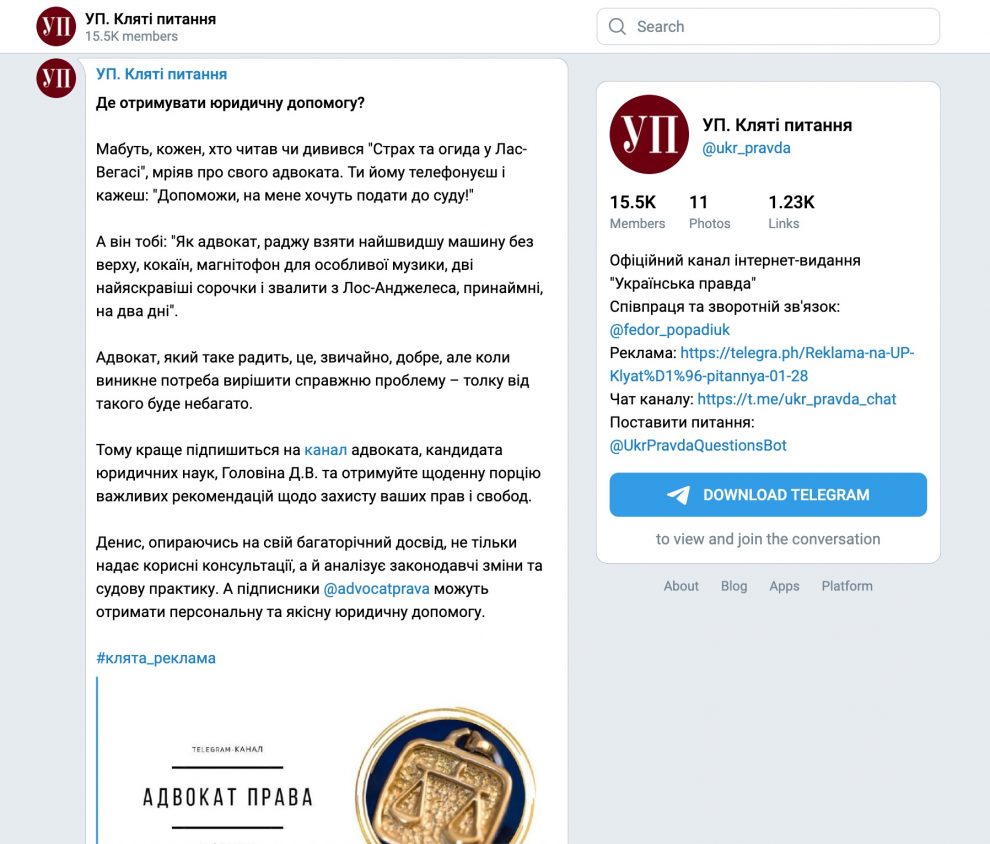
The messaging app Telegram was built around the idea that communication should be personal and encrypted. But in some countries, it has also become a popular tool for journalists to create public news channels. Here are three takeaways from how that’s evolved in Ukraine.
Reaching a young audience. When Fedir Popadyuk created the first Telegram channel of Ukrains’ka Pravda in 2017, the messenger app was beginning to gain momentum in Ukraine. “I thought, ‘There is a platform, and there are people interested in it,'” said Popadyuk, who oversees the outlet’s Telegram channels. “We need to cover this audience.” Almost half of Telegram’s Ukrainian audience is under the age of 25, according to a survey by the marketing research company Kantar.TNS, and many of them don’t watch television or listen to radio news.

“The purposes of using the messenger app have changed,” said Marina Kostromina, account director at Kantar Ukraine. “While last year it was used mainly for communication with friends, now it is also used for file sharing and news reading.” This trend is a global one over the past few years — but regional characteristics are key in making the app an effective multimedia hub for distributing information, a report of the Tow Center for Digital Journalism found.
Experimenting with formats. Another reason why so many journalists in Ukraine have embraced the chat app is that they find it a convenient platform on which to experiment with formats and tone of voice. And in contrast to WhatsApp, which limits the number of members on a particular channel, Telegram allows an unlimited number of subscribers in a channel and also provides a view counter for posts that includes forwarded copies.
Oksana Denisova and Tetyana Nikolayenko run a popular channel called The Newsroom. They started the channel when they were both working at The Insider but after leaving that media outlet, Denisova and Nikolayenko developed the channel into a stand-alone product. “We had an understanding that Telegram is quite effective as a medium,” Nikolayenko said. “If you post something on a Facebook, it doesn’t necessarily mean that everyone will see your message. With Telegram, you can really reach the entire audience of the channel.”

Effective engagement and high conversion. “I think there are a number of reasons why Telegram has become so popular,” said Ivan Oberemko, who created the Telegram channel for a popular show with the unusual name #@)₴?$0, one of the fastest-growing channels in the country. “For the reader, it’s a convenient platform — not overloaded with content, but also with offline access. For the publisher, there is no need for comments. Everyone is fed up with it on Facebook and Twitter. And Telegram provides very high conversion rates for audience responses, conversion from views to page visits, views in real life.”
Telegram’s encryption plays a major role in another news channel at Ukrains’ka Pravda called УП. Off the Record. (Its tagline: “Наші джерела повідомляють…,” or “Our sources report…”) Here the newsroom publishes insider information that comes from official sources in politics or business. “I know that sometimes journalists are using secret chats in Telegram for corresponding with politicians,” said Popadyuk. “It is very convenient because all messages disappear and there are no traces left.”

While Telegram has been criticized for loopholes in user data protection and has come under pressure in Russia and Hong Kong, none of the interviewees in this article mentioned security issues or pressure from the government. After all, in Ukraine, politicians like the current president Volodymyr Zelensky are using Telegram themselves in their election campaigns.
Tanya Gordiienko is a Ukrainian journalist and photographer. A version of this story appeared at the European Journalism Observatory.